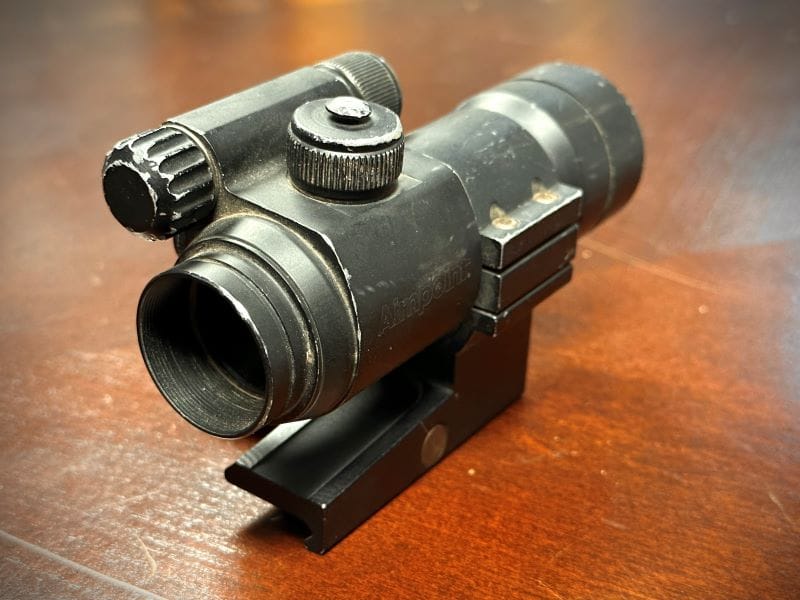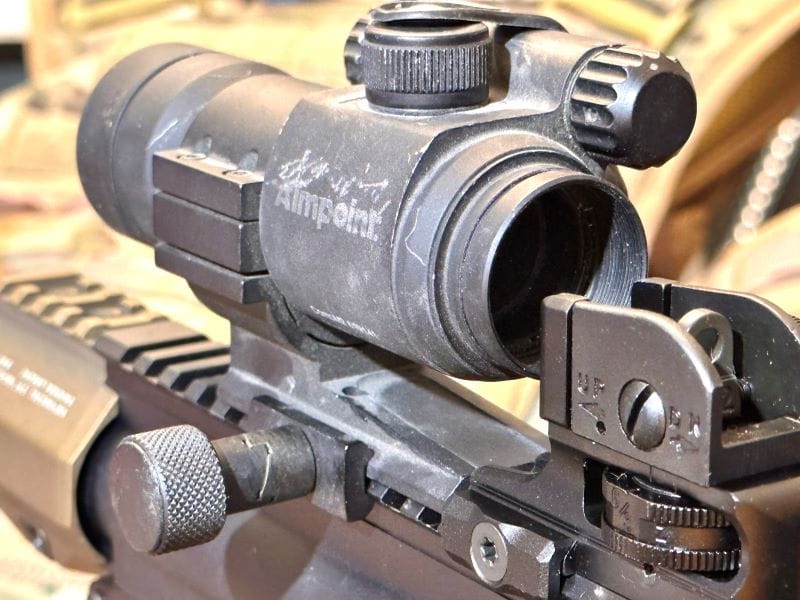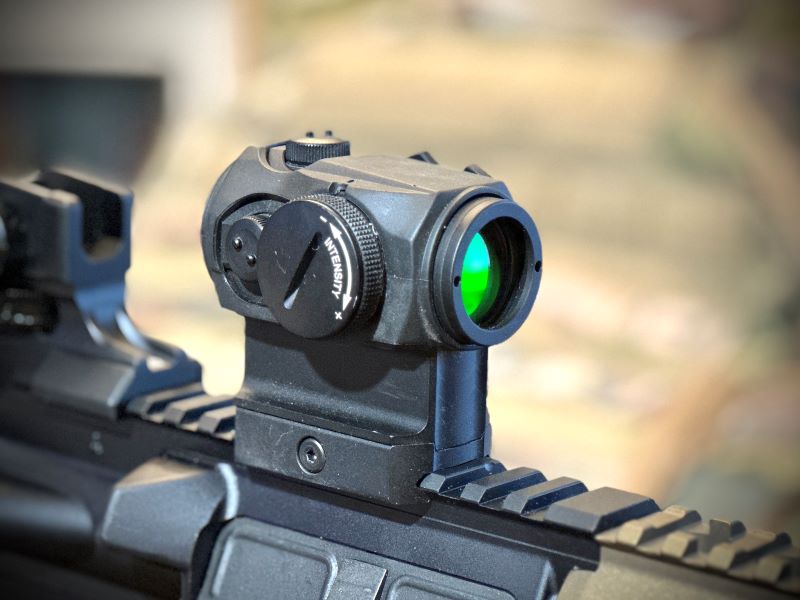If you own a rifle or PCC, there’s a good chance you own a red dot. When I was little, learning to shoot a rifle meant learning to shoot with iron sights. Where I’m from, people mostly hunt deer with bolt action rifles. Scopes were common growing up, a red dot, however, not so much. I remember watching movies about Navy Seals and other special forces soldiers with red dots and other items attached to their rifles. In those early days, those red dots would have been Aimpoints.

A standard attachment on most AR-15 rifles today, there are plenty of companies making them. In recent years, optics have become popular on handguns as well. I like having options with any type of product. Competition between inventors and companies gives customers more products at a better price. Some of those companies are making great optics that cost as much as your car and some are affordable yet durable. If you own multiple rifles, it can be expensive to equip each one with a high-end optic. Aimpoint makes one of the best optics out there and the price tag matches that quality. But only one company can brag about being the first major producer of red dots. So, let’s look at how, when, and what happened when the world met Aimpoint.
The Founding of Aimpoint AB
A man by the name of Gunnar Sandberg founded Aimpoint after a group of entrepreneurs helped design an optic that projects a red dot onto a piece of glass. Aimpoint sights are manufactured in Sweden and are one of the most copied optics out there. If it says made in China, Taiwan, or any other country than Sweden, it’s probably a fake. Their goal was to make a good optic for hunters that could help hit a moving target. Gunnar died in 2007 and his son, Per, took over the company as CEO for a period.
The first red dot was introduced as the Aimpoint Electronic in 1975. They probably didn’t know at the time that their red dots for hunting would lead to a revolution in the firearms industry. According to Aimpoint, the optic came about when a Swedish sport shooter wanted to improve his ability to hit moving targets.
This project was not only a success, but it gave birth to a company that would be revered for its ability to make nearly indestructible optics for rifles. While their red dot was designed for hunting, Aimpoint signed its first contract with the US Military in 1997 for 100,000 red dot sights. The contract was for the Comp-M2, which the military designated as the M68. They started being delivered in 2000, and optic-equipped rifles have been standard ever since.
The CompM2
Aimpoint has been around for a while now, but it’s hard to talk about them without bringing up the infamous CompM2 red dot. When the CompM2 was designed, it set a new standard for militaries around the world. Nearly every NATO country uses Aimpoint and hundreds of law enforcement agencies around the world issue them too.

The CompM2 is a rugged tube-style 4 MOA red dot. It can be submerged up to 80 feet in water and withstands the harshest environments on the planet. My agency uses CompM2 optics for our patrol rifles. They were supplied to us by the Department of Defense on an excess-property sharing program. They look like someone threw them off a cliff (and may have for all I know) but guess what—they still work. The battery will power one for up to 10,000 hours of constant run time.
The CompM2 has a simple turning dial for brightness settings and that’s it—no buttons to hold down for a certain amount of time or multiple buttons to push at the same time to turn it off. You just turn the knob until the dot is as bright as you want. Sometimes simple is better. The M2 was eventually replaced with newer models (like the CompM4) but is easy to find today because of its popularity and mass production.
Aimpoint Micro T-2
Since the early days of the big, rugged optics that could rival army tanks, Aimpoint has produced a large selection of durable optics. This gives us plenty of options depending on the gun being used and the purpose the optic will serve. One of these optics is the Micro T-2. The T-2 is a 2 MOA red dot reflex sight that is lighter and takes up less room than the CompM2. The T-2 was designed for those who need a more compact optic while keeping the durability of the M2.

The Micro T-2 is NVD compatible and has a run time of 50,000 hours on the CR2032 battery. With Aimpoint, you really do get what you pay for. I watched a video of a guy who drove over his Micro T-2 with a truck before throwing it up in the air and blasting it with his shotgun. Not surprisingly, it still worked like new. Others have frozen them, baked them in the oven, and dropped them on concrete from multiple stories up. It’s hard to not want an Aimpoint if you have ever used one.
Summary
Aimpoint may have started the red dot empire, but they are no longer alone. There are some great companies out there making red dots that are worthy challengers to the Aimpoint. EOTech, Trijicon, Holosun, Vortex, and more all make good-quality optics.
I have used just about every type of red dot on the market, and I can’t say there is one brand that is better than the other. The optic you buy depends on the price you want to spend, the gun it will be going on, and how often you plan to use it. Regardless of which optic you choose, Aimpoint has the history, the ingenuity, and the bragging rights to say, “We did it first.”


